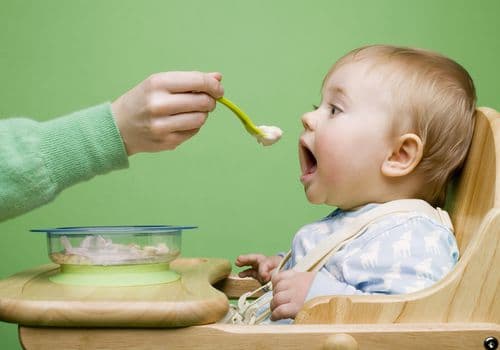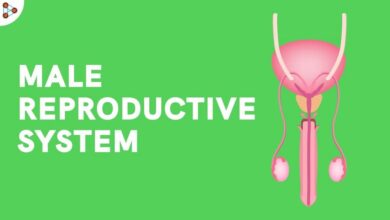Eat, sleep, poop, and repeat the process. That is to be expected when you have a new baby. Food is quite important for your baby. It’s critical to feed your baby the right food during their first year of life. Your child’s first year of life is when they develop the most. It’s critical to provide your baby with a range of nutritious foods at the appropriate times.
However, if you are a new parent, you might be concerned about the necessity of feeding your child. What is the recommended amount of ounces for your baby? Is it necessary to wake a sleeping baby to feed them? Why do they always appear hungry? When are babies allowed to eat cereal?
Well, you don’t have to be concerned; we have collected a list of helpful hints, dos and don’ts, and calendars for you to follow throughout your baby’s first year. Starting good eating habits at a young age will help your child develop healthy food habits for life and guarantee that they grow and thrive.

Feeding Your Baby (The First Year)
Your baby will eat a range of foods during the first year of their life. These foods will aid in your baby’s development and growth. Breastfed babies will eat eight to twelve times per day. Formula-fed babies will eat six to ten times each day. You can start introducing solid foods at six months of age.
Feeding Guide (Breastfed & Formula)
Before we get into specific age groups and baby feeding schedules, here are a few general feeding suggestions to consider as you navigate your baby’s first year.
Feed on Demand
While the guidelines have changed over the years, it is now advised that newborns, including those who are fed formula, eat on demand. Throughout an infant’s first year of life, breast milk and formula are supposed to be the major sources of nutrition.
Breastfed Babies Feed More
While each baby is different, one thing that remains consistent is breastfed newborns eat more frequently than those who are bottle-fed. This is because breast milk is easily digested and empties the stomach considerably faster than formula.
Adjust Your Expectations
Feeding may largely depend on your baby’s specific needs. Premature babies are more likely to consume according to their chronological age. If your baby has problems like reflux or failing to thrive, you should talk to a doctor about the optimal feeding schedule and amount for them to consume.
Baby Feeding Schedule by Age
Up to 2 weeks of life
You deal with a newborn or infant feeding schedule, which is practically non-existent in the first few weeks of life. This is perhaps the most exhausting time when it comes to feeding because infants require constant feeding (every 2-3 hours) throughout the day and night to help them grow. Their biological clocks are also not fully established, so they cycle between sleeping and waking. With such small tummies to fill, expect to breastfeed 8-12 times a day or every 3-4 hours if your baby is on formula.
If your baby does not wake up in the middle of the night to eat during the first few weeks, your pediatrician may consider waking him for feedings to ensure that he receives the nutrition he requires to thrive.
2 weeks to 2 months
As your baby approaches two months, you can begin to notice their hunger signs, such as putting their fist in their mouth, fussing that can escalate quickly, smacking, or licking their lips.
· 2–4 months
Babies’ tummy grows, and they can take in more breast milk or formula at one sitting; your child will naturally start to fall into a feeding pattern between 2 and 4 months. Your baby’s appetite will grow, and he will become more vocal about letting you know when he’s hungry. A three-month-old baby should drink 4-6 ounces of milk 6-8 times each day.
4–6 months
You can expect your kid to eat every 4 to 5 hours between the age of 4-6. If you wonder when to start feeding your infant solids, some babies are ready between 5 to 6 months; however, solid food should never replace milk as the primary source of nutrients.
6–12 months
Your infant should be feeding every 4 to 5 hours at 6-12 months. A 6-month-old feeding schedule will include 4-8 ounces of formula or breast milk per day, as well as cereal and other infant meals.
Your baby will begin to consume solid foods between the age of 8-12. Move away from pureed infant food and toward more texture-rich options (scrambled egg, mashed banana, or well-cooked, chopped pasta). Try combining a variety of soft foods, as well as breast milk and formula, into his diet. Your child should be eating a range of foods and consuming about 4 ounces of solids per meal as they approach their first birthday.
Continue to provide breast milk or formula as needed. Even if your baby is already eating from a spoon, breast milk or formula will still provide the majority of his nourishment. Consider the solids you provide as healthful supplements as well as an opportunity for your child to try new flavors and sensations.

How Often Should I Feed My Baby?
Babies can recognize when they are hungry or full. Feed your child whenever they are hungry. Breastfed babies should be fed eight to twelve times each day, for a total of 10 to 15 minutes per breast. Formula-fed babies should be fed six to ten times throughout the day, including at night. It’s not a good idea to put things like rice cereal in a bottle to get your infant to sleep at night. This can result in excessive weight gain as well as a reduction in important nutrient intake. It’s also a possible choking hazard.
Your baby will drink less when they begin to eat solid foods. Gradually increase the amount of solid food you provide while reducing the amount of breast milk or formula. Remember that all foods should be served with a spoon rather than a bottle.
How to Know When My Baby is Ready for Solid Food?
It can be difficult to determine what your baby needs when and how much of it. Many doctors advise breastfeeding your infant exclusively for the first six months of their life. If you’re not exclusively breastfeeding, your kid may be ready to start solid foods between four and six months.
Because every baby develops differently, here are some signs that your baby is ready for solid food developmentally:
· After eight to ten hours of breastfeeding or 32 ounces of formula, the baby is eager for more nutrients.
· The baby’s mouth opens easily to accept the spoon-feeding.
· In the high chair, the baby can sit upright with little or no support.
· For long periods, the baby has good head control.
How do I Know When My Baby is Hungry or Full?
Babies scream or complain because they are hungry, tired, upset, or uncomfortable, or because they need to be burped or change their diaper. Following are some signals that your baby is hungry:
· Smacking lips.
· Leaning toward the bottle or the breast.
· Pointing at a spoon or food.
· Sucking their own hands and moving hands to mouth.
When hunger cues are missed, babies get uncomfortable or cry. To make feedings more enjoyable for both the infant and the caregiver, it’s crucial to detect hunger cues.
The following are some indicators that your baby has had enough to eat:
· Trying to get away from the bottle, spoon, or breast.
· Changing positions, shaking the head, tightly closing the mouth, and aggressively moving hands.
· Falling asleep.
How to Increase Milk Supply?
Mother has to produce enough breast milk to meet the baby’s needs because you will need to feed the baby frequently. After you have finished nursing the infant, consider pumping. Maintain a healthy, well-balanced diet rich in fresh fruits and vegetables. Drink plenty of water to stay hydrated. Get a decent night’s sleep as well.
Can I Breastfeed The Baby With Bleeding Nipples?
Blood can flow from cracked nipples. Even if it makes you uncomfortable, you can continue to breastfeed the baby. Moreover, due to poor latching, the problem of broken nipples will occur. As a result, to know about latching procedures, you’ll need to consult your specialist.




